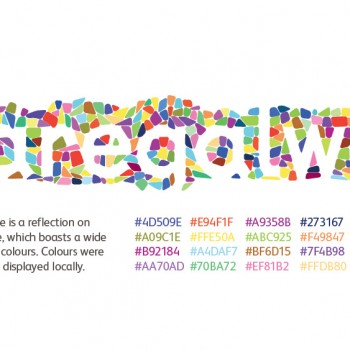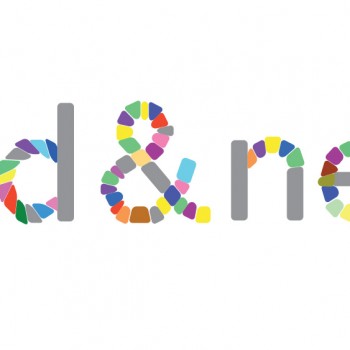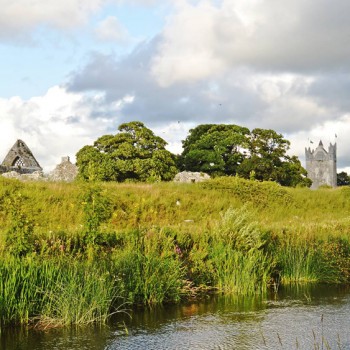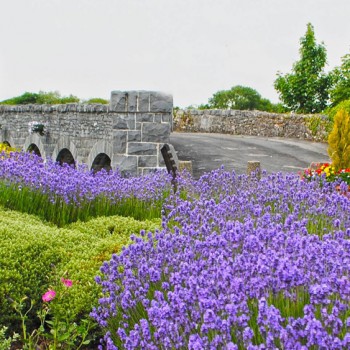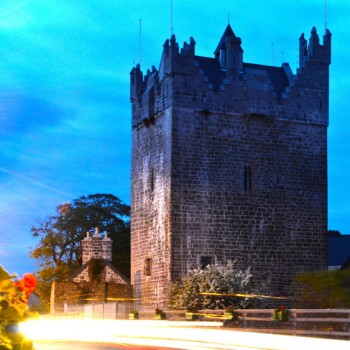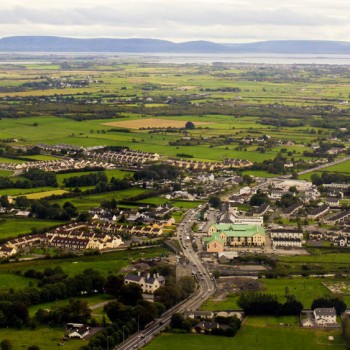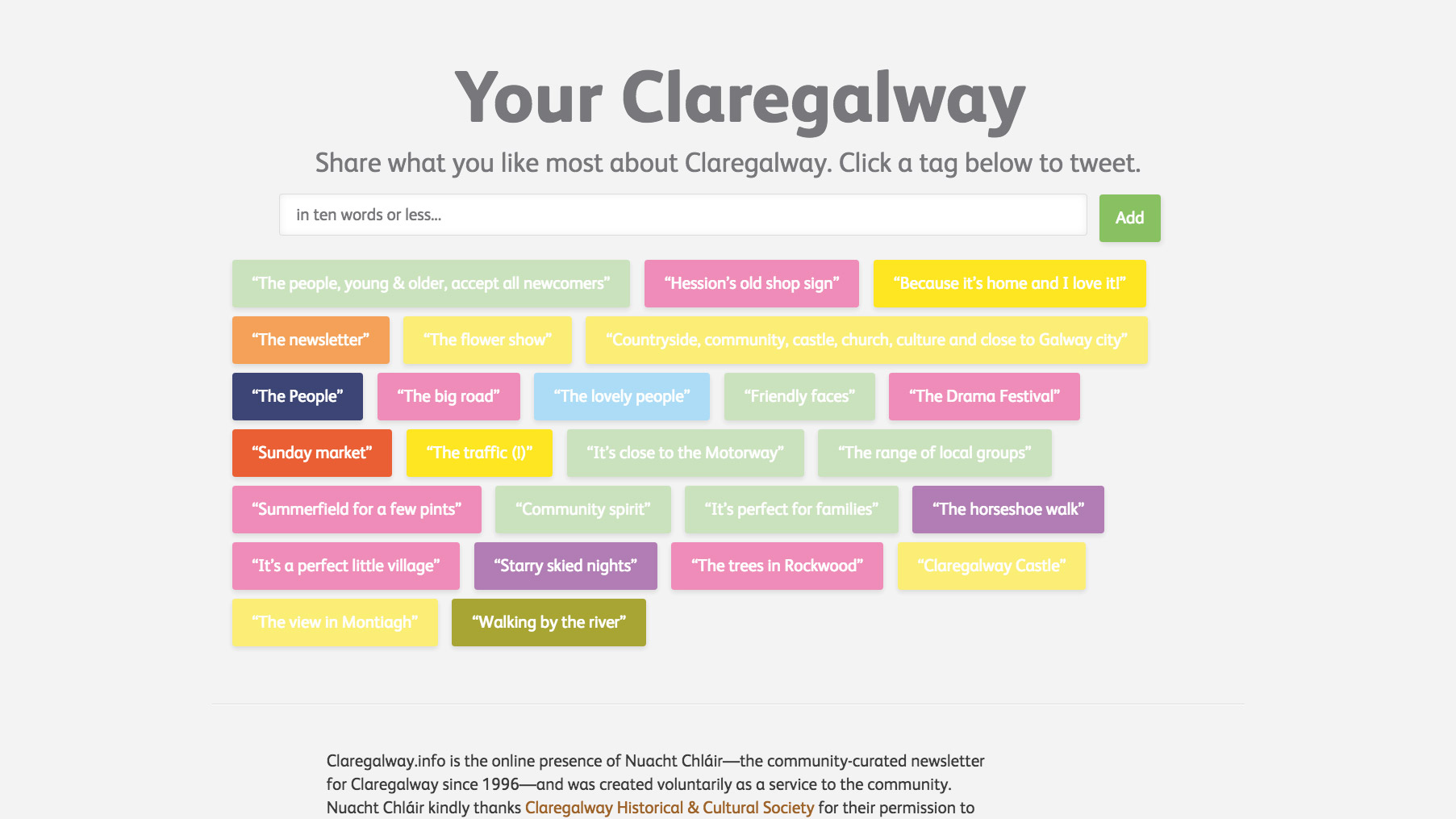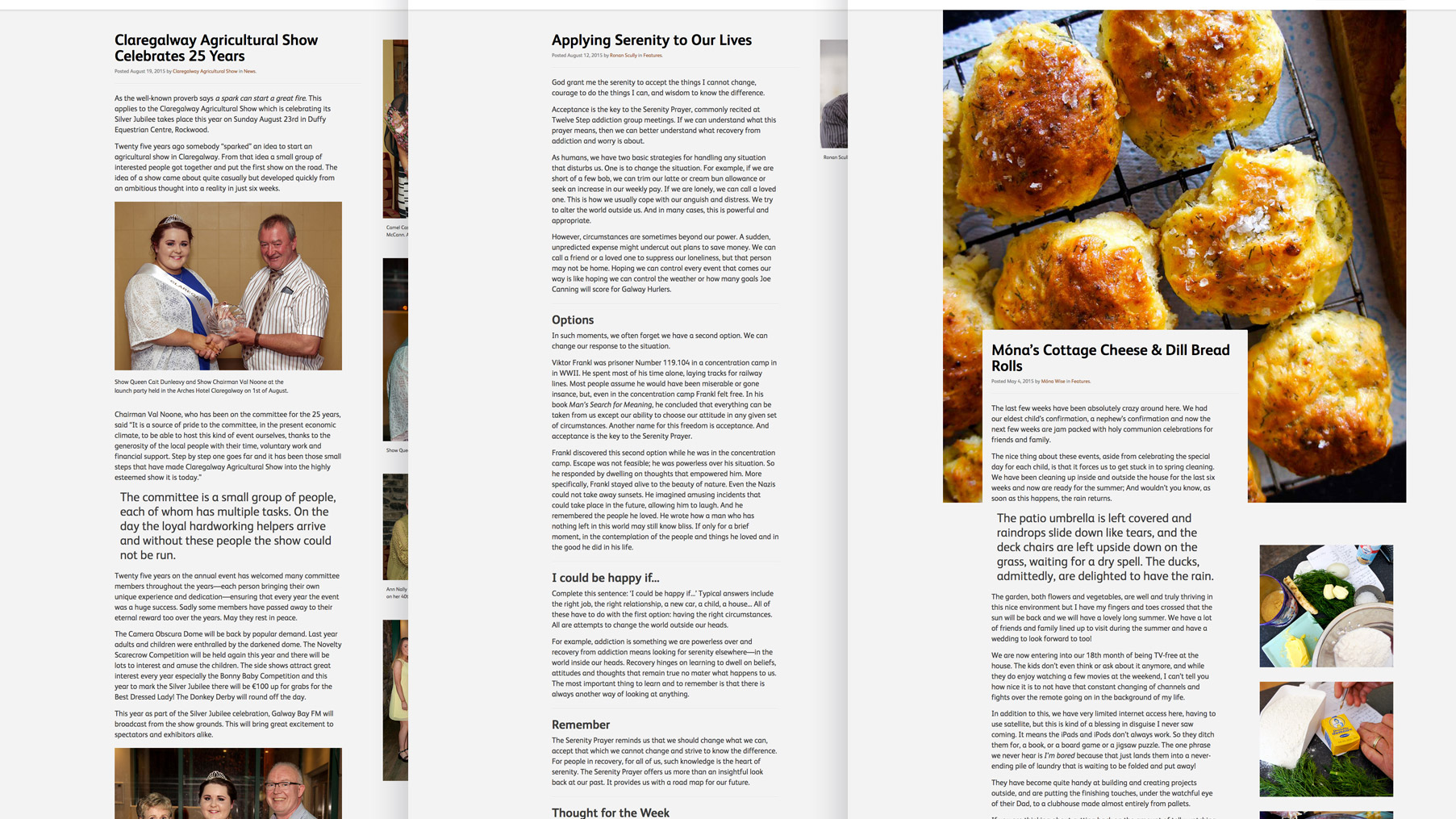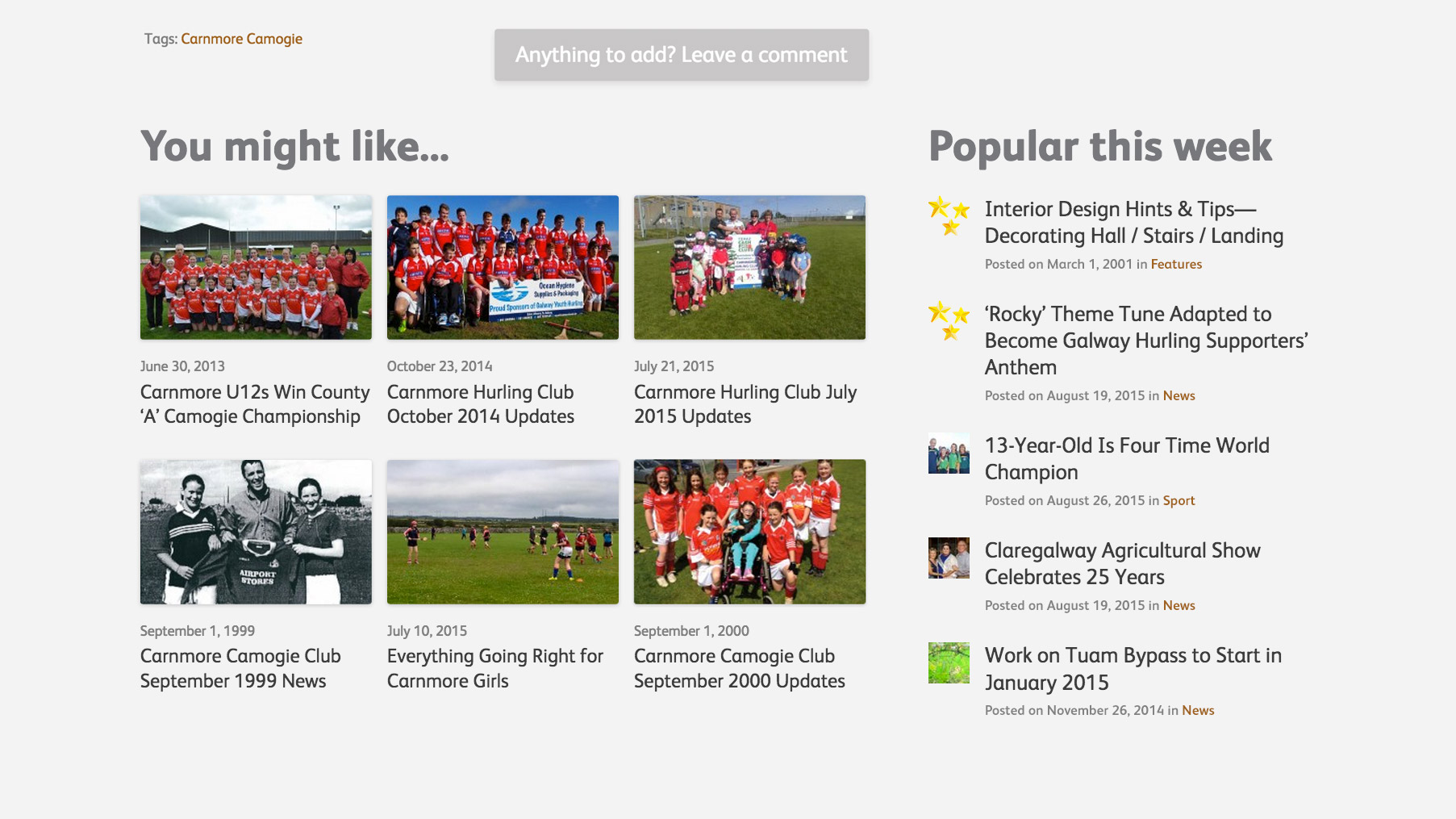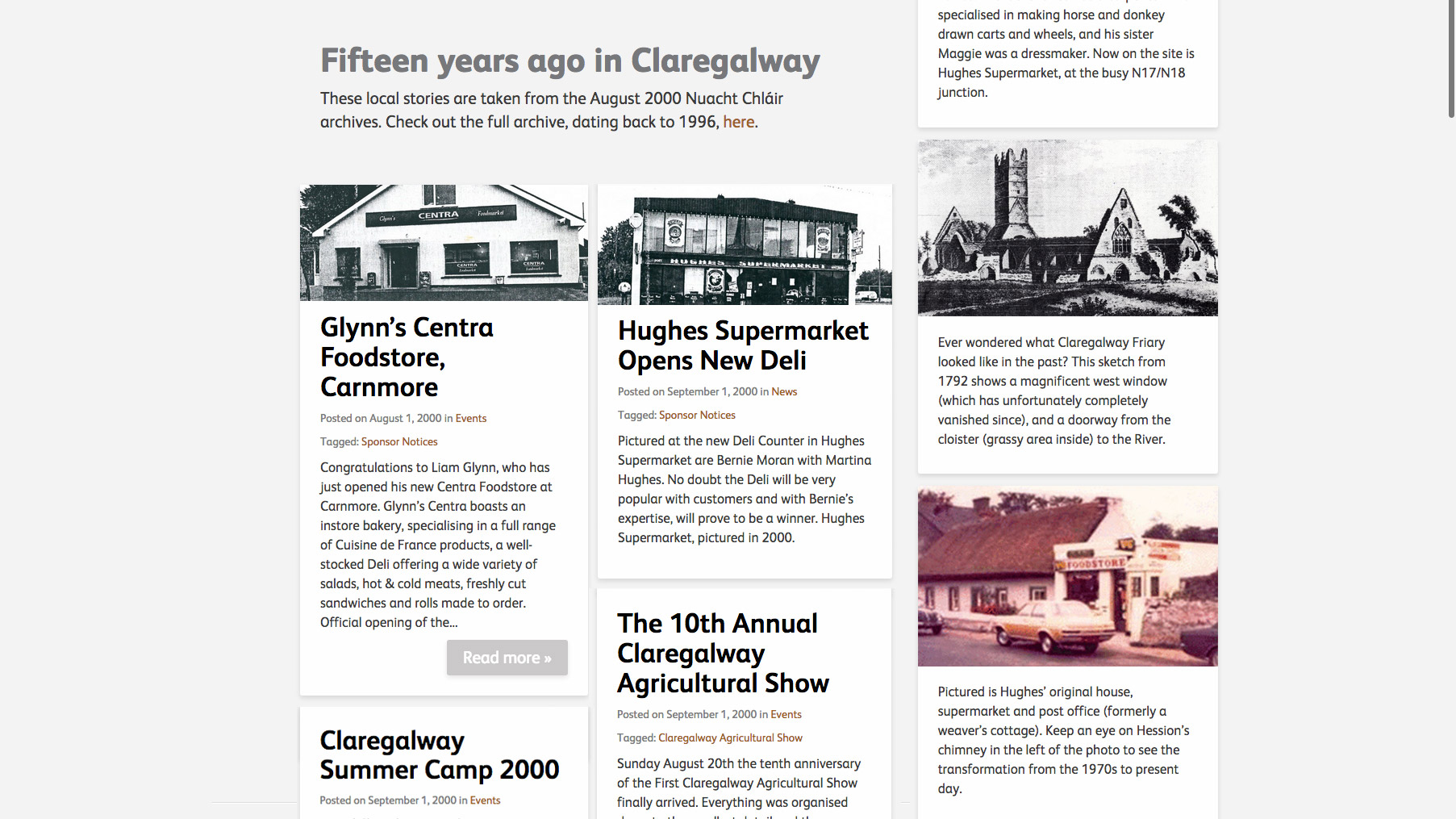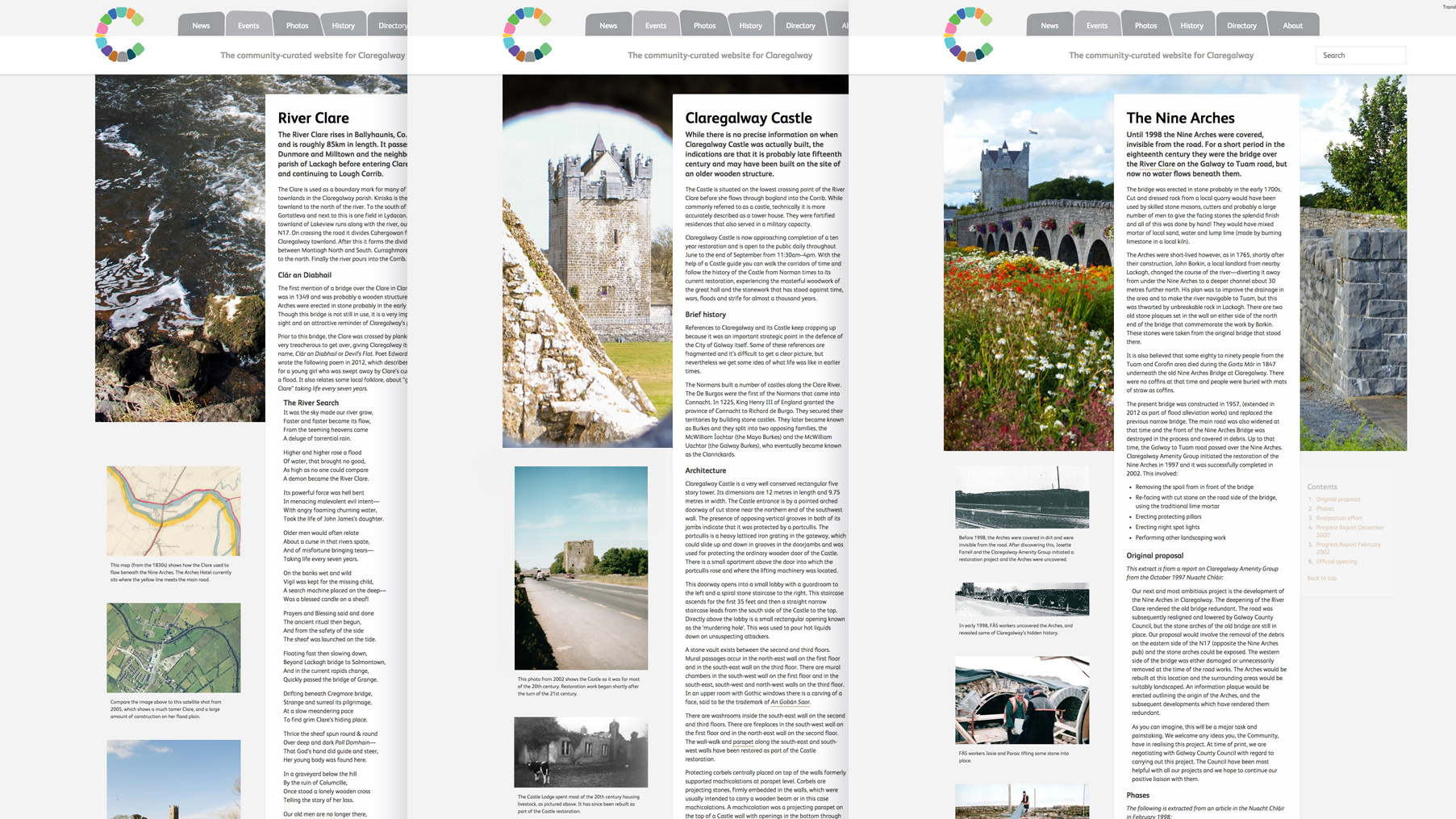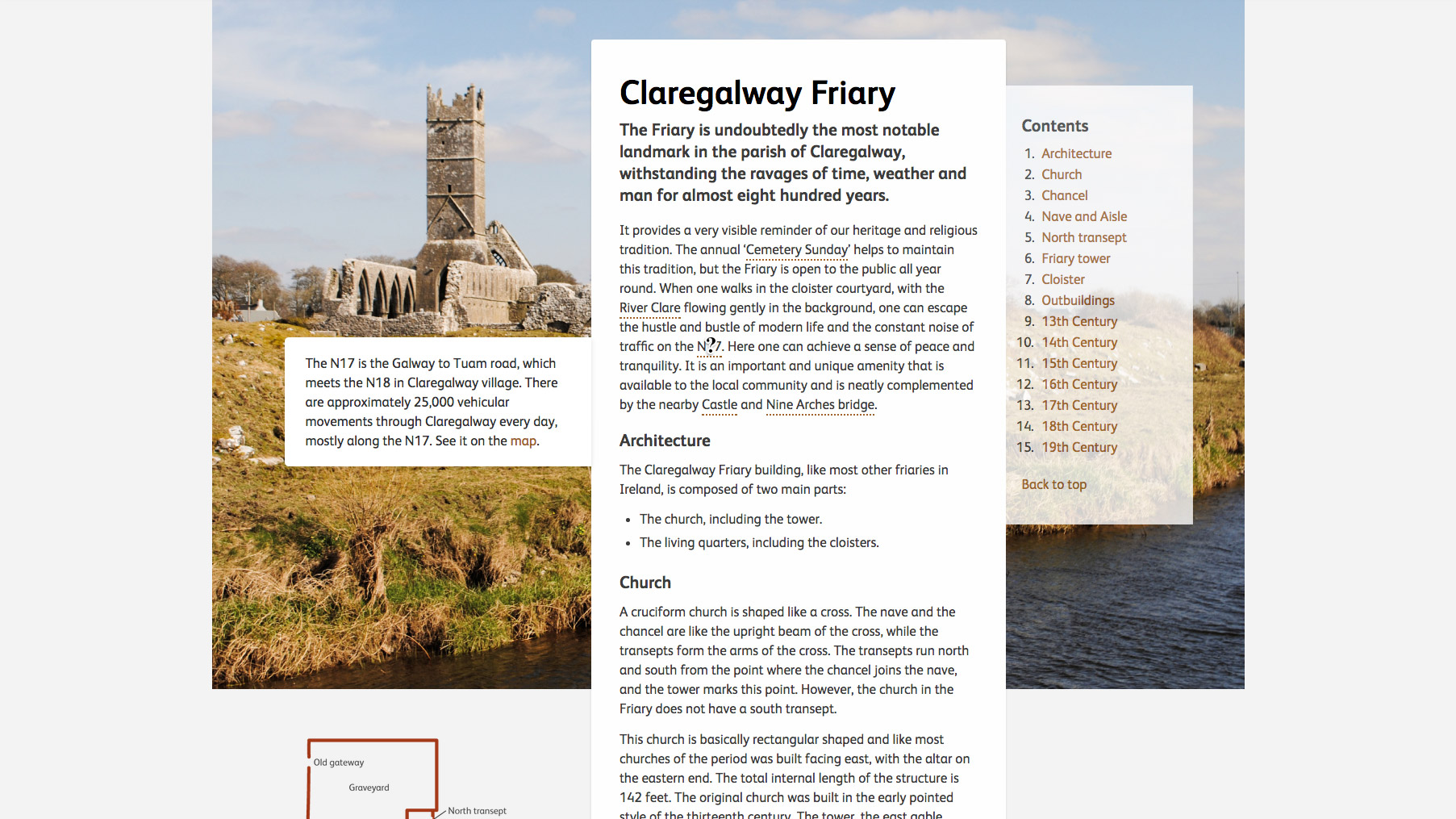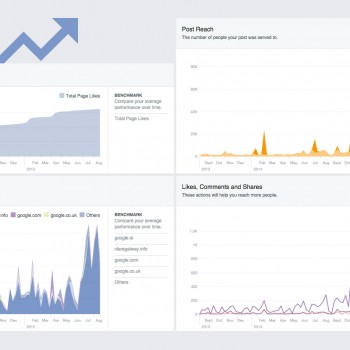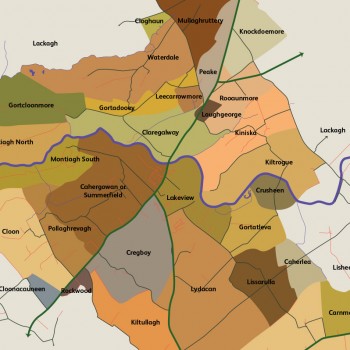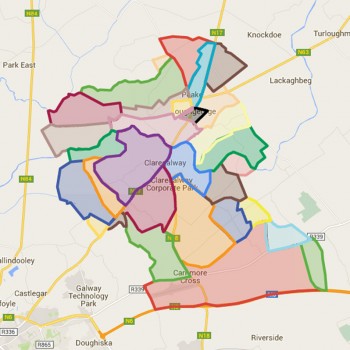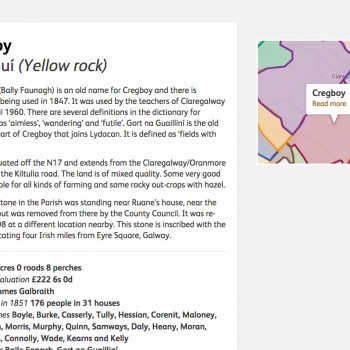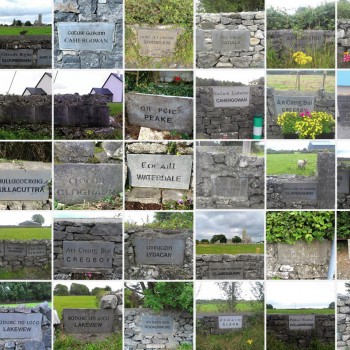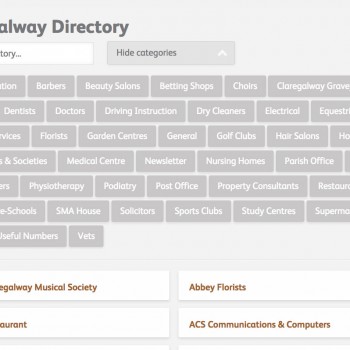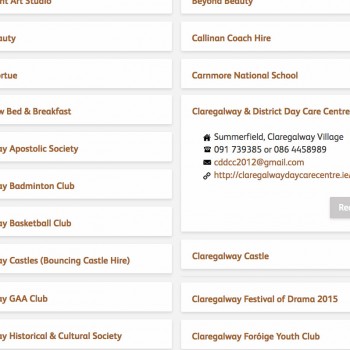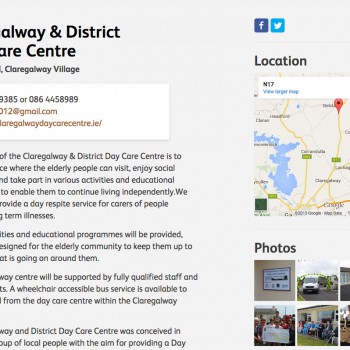Claregalway (my hometown) is a rural townland in Galway, Ireland. When I was young, the village was sparsely populated, and its colourful history was regaled by community members. But in recent years the population flourished, bringing thousands of new residents to the area. For the first time in centuries, word-of-mouth began to fail as a medium to tell the village’s many stories.
What could be done to engage this new community?
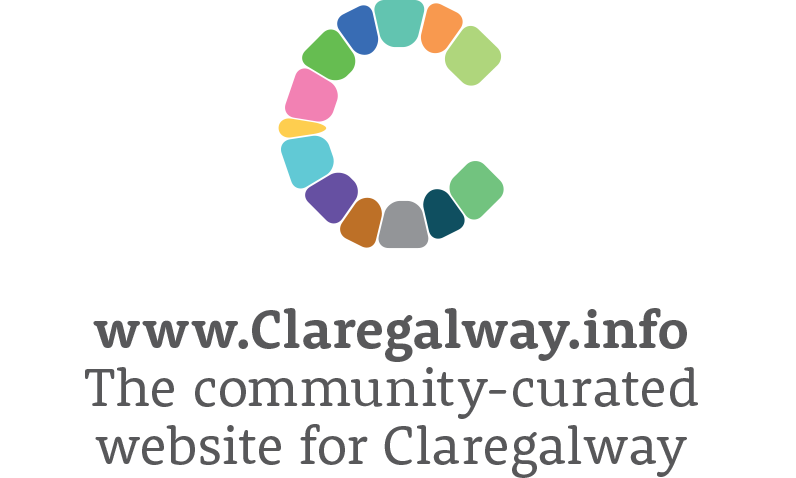
Sounds great, but how does it work?
Good question! I started by gathering every source I could find, both written and oral, and starting categorising the mountain of paperwork I had accumulated. I narrowed the sections down to News, Map, Photos, History, Directory and About and began designing using the bundles of research I had compiled. But the more I published online, the more content was being created and shared by the growing community. After quite a few iterations I built a solid wireframe for the website, and got a developer friend to help me transform it into a functional WordPress template. The site has had several minor evolutions since but these sections remain, acting as portals to various segments of information about Claregalway and its inhabitants.
I based the visual style on illustrations of stone walls coupled with vibrant colours, reflecting the old and new dynamic in contemporary Claregalway, and wrote copy in a pleasant, welcoming tone. I designed a special font based on the logomark (I’m still searching for a way to incorporate that lovely ampersand into the website somehow!) and took as many photos as I could around the area, at sights and landmarks in the area and also at local events. My neighbour had built a plane in his shed and even took me for a spin to get some aerial shots! So many people were so forthcoming with stories and help when I spoke about the project, it was already clear that a resource to house the abundant information from around the village was much needed for the area.
A ‘living history’
Since 2009 I had been designing the local newsletter Nuacht Chláir (it was my first ever design job actually!) which had been produced monthly since 1996, and had amassed a vast archive over the years. I digitised the entire archive, which documents the village’s transformation from quaint community to semi-suburban hub through hundreds of stories produced locally and only ever published in Nuacht Chláir. This laid a strong foundation for the News category on the site, which today boasts thousands of articles from local contributors, featuring everything from recipes, poetry, memories and gardening tips to local news, sports and special reports.
The News category is by far the biggest on the site, and acts as an entry point for many readers. If you Google something to do with Claregalway, chances are you’ll land on a Claregalway.info news page. News is split into four broad sections: News, Events, Features and Sport, and tags help to further organise stories. The entire Nuacht Chláir archive is also hosted in this category, connecting related stories from as far back as 1996 with contemporary news. An events calendar highlights upcoming events in the village, and readers are encouraged to share any additional information they might have in the comments section of each story. Several local residents act as admins on the site, posting stories that are received through various channels.
A constantly changing canvas
Claregalway has long been a homestead, and archaeological evidence has shown it has bustled with human activity for at least a thousand years. Until the most recent millennium though, much of this activity was focussed within a small, agricultural community. With the growing urbanisation of Claregalway, and the covering of layers of history with modern amenities however, it would be very easy for the unique past of Claregalway to be forgotten or lost. I amalgamated some of my primary research with documents I graciously received from helpful residents, including the parish history publication compiled by the Historical Society, and designed a History section for the website.
The History section contains a series of snippets, featuring brief histories and Did You Knows about the village and some of its landmarks. There is also a feature called Fifteen Years Ago in Claregalway which surfaces news stories from past issues of Nuacht Chláir. The spotlight of the section however, is a series of case studies on some of the village’s most famous landmarks and historical patterns. Each study was designed to be easy to digest, with accompanying photos and illustrations where appropriate, a table of contents, and sidenotes with useful additional information about key terms. The feedback received has been very positive, with locals and expatriates contributing more information to refine and enhance the section.
One hand washes the other
As more and more local residents contributed their stories to the Facebook page, the website’s engagement levels soared, and vice versa. With local residents, neighbouring parishioners and expatriates from all pockets of the globe liking, commenting and sharing stories, the website and page act as complementary hives of local information. Over the years the page has helped reunite dozens of lost pets with their human companions, and local events have been conceived and organised right in the comments section of posts. We have shared thousands of stories, photos and interesting links, and every day the page is brimming with engaged users chatting with their neighbours. The website is home to longer-form content about the village, and a reference for historical and local information.
The Claregalway.info Facebook page has seen significant growth, and the engagement has been extraordinary.
Putting Claregalway on the map
Over the centuries, information about townlands (smaller divisions of land within the parish) were largely understood through word of mouth. Their boundaries were created by natural divisions like the river, or manmade ones like the main road, and their names were often ambiguous as they had been translated from Irish to English many times as the village evolved. The array of bilingual townland names were not well documented in print, and almost no information was available online. So, using old maps as references, I drew a modern townlands map for print and built an interactive Google map for the website, documenting all historical information I could uncover about townlands in the area.
Getting down to business
Modern Claregalway remains bustling because of the wide array of small businesses in the village, many of whom actively fund and take part in local activities. Many of these businesses are run by local residents and have little or no online presence. Some progress on a local business directory had already been made by Nuacht Chláir, so I took this information and digitised it to create a Directory section on Claregalway.info. Where possible I added relevant information, links, photos and location to listings, and of course contact details so readers could get in touch. The Directory remains active, with new businesses popping up quite regularly in the village, and provides an online presence for many local stores, groups and services.
Claregalway.info continues to grow as more and more local residents get involved with the project. It has taken on a life of its own, but I continue to refine and enhance the website at every opportunity. The response from the community has been overwhelmingly positive, with comments from Claregalwegians in all corners of the world thanking us for providing a useful source of local news, photos and stories.





